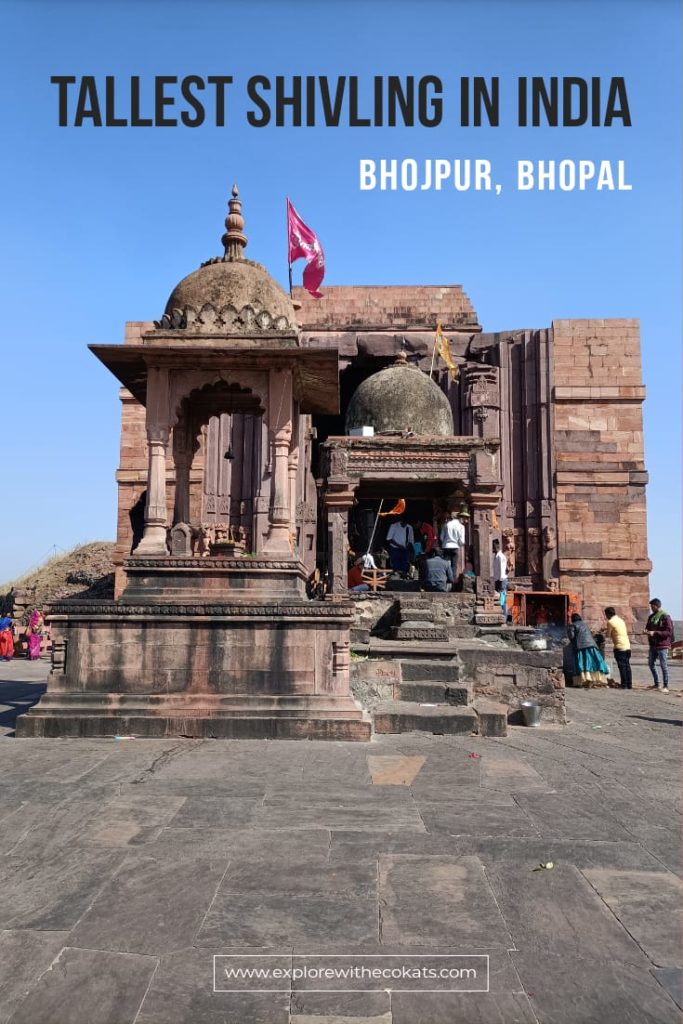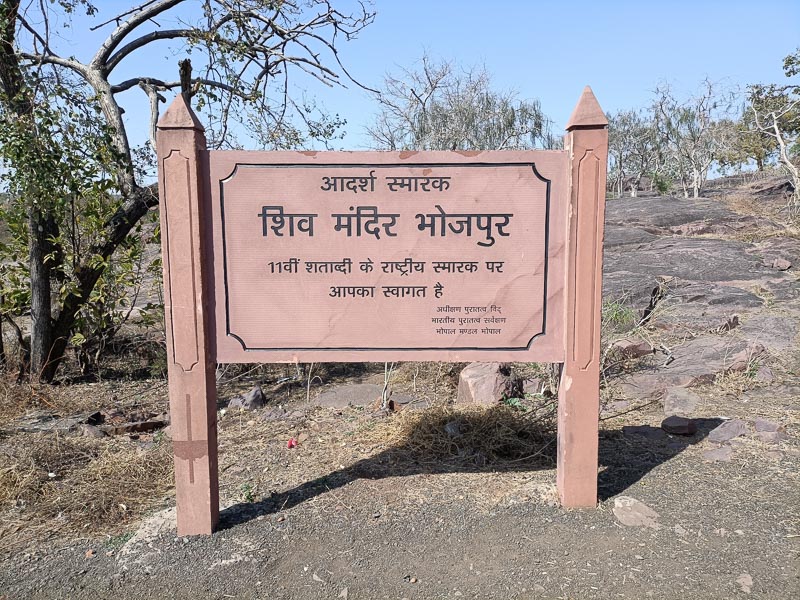Last Updated on October 12, 2022 by
Having read about Bhojeshwar Shiva Temple recently, I wanted to make time during my Bhopal visit to pay respects here.
On a family trip to Bhopal, while I was looking for places to visit in Bhopal, Bhojeshwar Shiva Temple popped up.
Only 14 km away from the resort, I read about the Bhojpur temple near Bhopal and the more I read the more intrigued I became to visit it. I booked an Uber for a to and fro visit (I will talk about it later in the post) and headed there. My Uber driver decided to be my guide for the visit and told me many things about the Bhojeshwar Shiva Temple, Bhopal.
Table of Contents
Bhojeshwar Shiva Temple – History and Legend
The quiet town of Bhojpur in Madhya Pradesh is famous for the Bhojeshwar temple also known as Bhojpur temple, Bhopal). It was built by Raja Bhoj of the Paramara dynasty – the same Rajput king who also founded the city of Bhopal.
According to the legends, the Bhojpur Shiva temple was built in a day in the 11th century. However, the construction was never completed. It is said that Raja Bhoj shifted his focus and resources towards the Somnath temple that was being attacked by the Mughals. Before he could take up the pending work of Bhojeshwar temples, he passed away and the construction remained incomplete. Others say that Raja Bhoj wanted to build this temple in one day and so it remained incomplete after the day’s work.
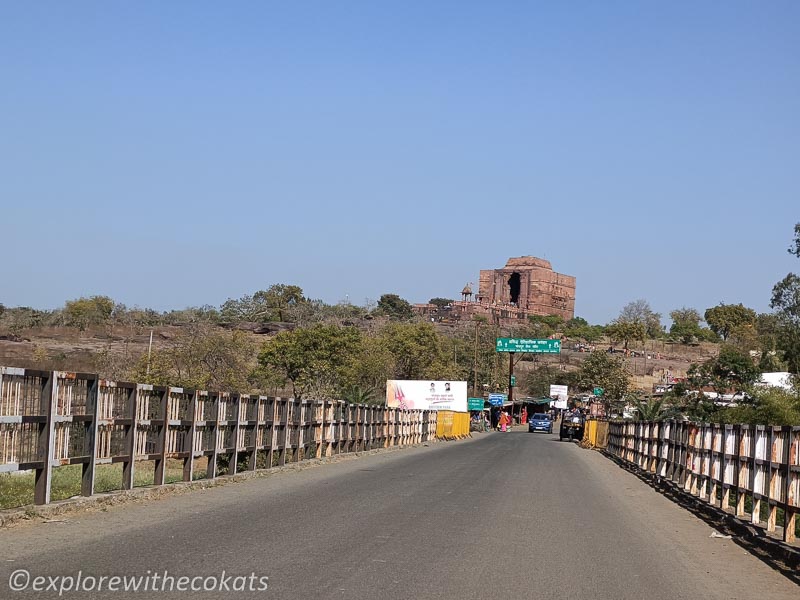
Excavations at Bhojeshwar Mandir, Bhojpur
It is said that for many years the temple was just a big pile of rocks and stones. On clearing it, it was found that the roof had a gaping hole. For 1000 years the lingam was open to the sky with water pouring down every monsoon and the lingam was damaged. It was only later that ASI managed to repair it in its former glory. A fibreglass cast with an appropriate design for the dome was placed. Currently, the dome appears to be supported on the back of 8 heavenly bodies playing various musical instruments. The damaged lingam was also repaired.
The excavations also revealed that the intent was to build more temples in this place – like a temple complex in Khajuraho.
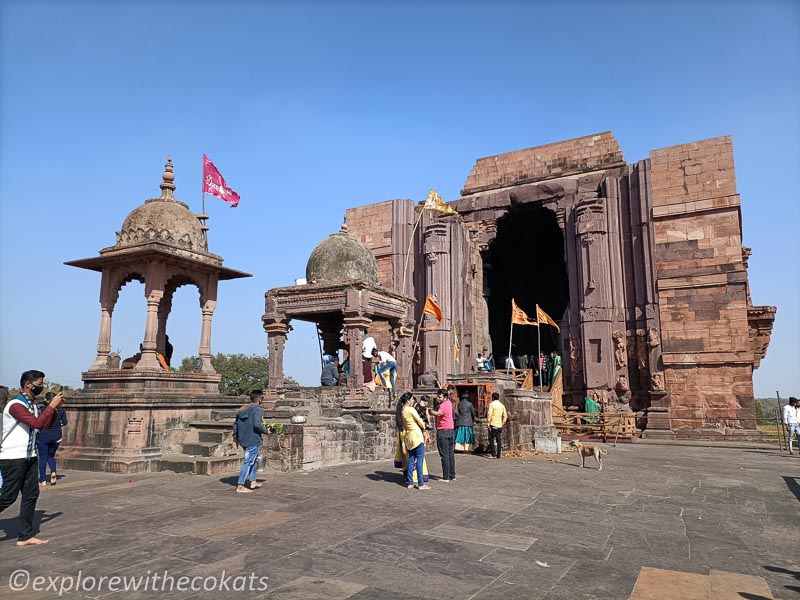
Bhojeshwar temple in Bhojpur – Madhya Pradesh
As my cab took a turn on the bridge of Betwa River, he pointed towards the rocky sandstone escarpment where a huge structure was seen from a large distance. He shared a memory from his childhood where they would visit this Shiva temple on weekends, take a dip in the Betwa river waters, cross the river on a small boat and reach the caves on the opposite side.
As I inched closer, I marvelled at the ancient architecture. Shops selling puja material now dotted both sides of the road. The car slowed down near an entrance gate and I was surrounded by local shop owners to buy garlands, flowers and leaves for the temple. I respectfully declined and walked towards the temple.
A huge area with stones is the topography around the temple. I stop to read the ASI information board where a monkey joins me and another steals a polybag from a devotee that has a coconut.
I laugh at the notorious monkeys and climb the 20 steep steps to reach the temple. The main Bhojeshwar Shiva temple overlooks 2 small temples that house a Nandi and a small Shivling.
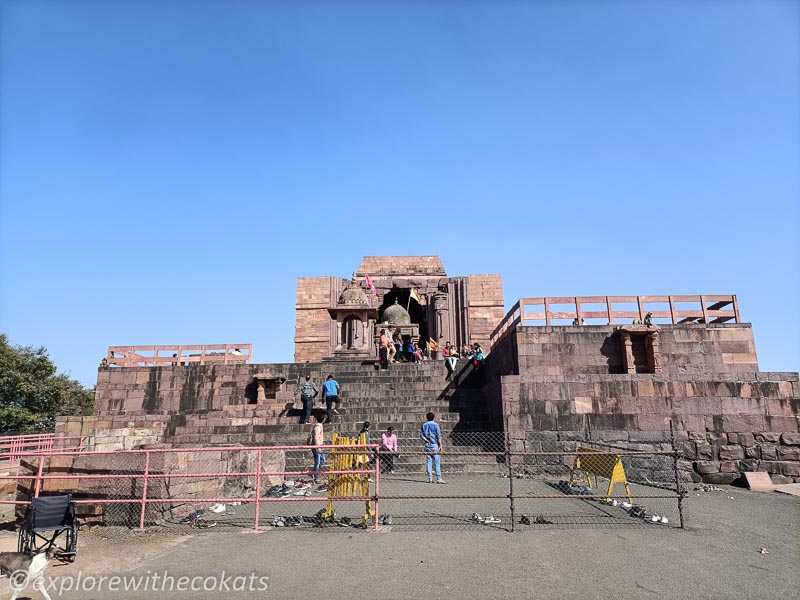
Unlike other temples in India such as Mahakuta Temples, Trimbakeshwar Temple, Kamakhya temple that are adorned with intricately carved sculptures, the walls at Bhojpur Shiva temple, Bhopal are plain. The front façade has idols of gods, goddesses and apsaras.
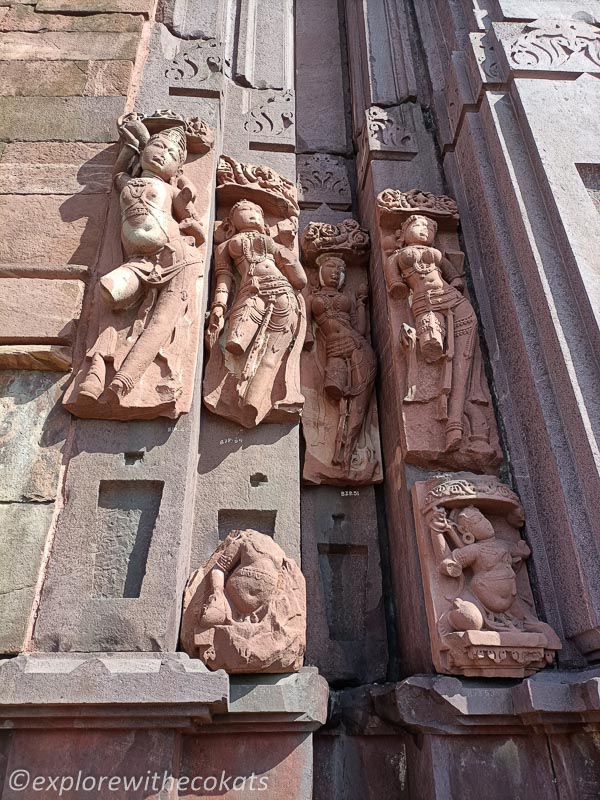
Right before entering the garbhagriha (inner sanctum), I noticed a line drawing on a stone. This is a blueprint of Bhojeshwar Shiva temples with details of temple layout, elevation, and pillars.
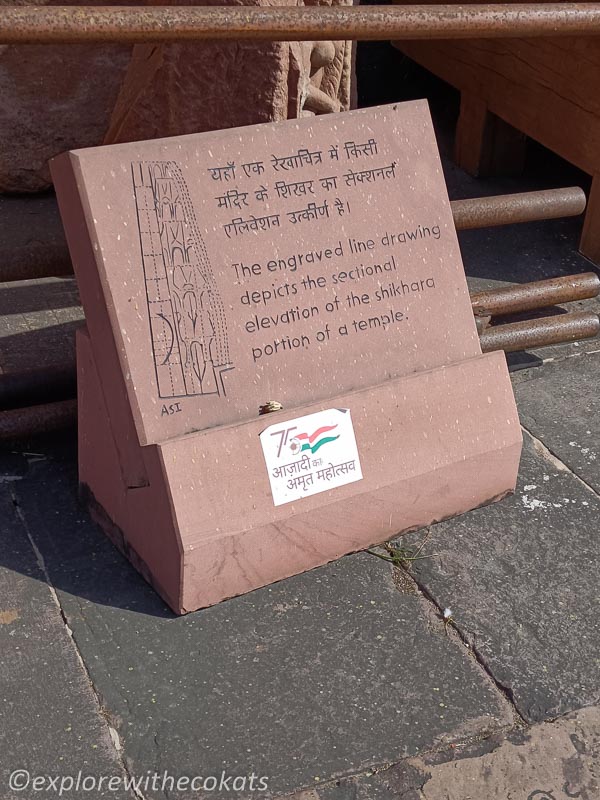
I am not prepared for the sheer mightiness of the Shivlinga that stands in the garbhagriha. Four colossal pillars, nearly 40-feet high, hold up a domed ceiling with intricate floral carvings including an inverted lotus. The four brackets that support the cornerstones have sculptures of Shiva-Parvati, Brahma-Savitri, Lakshmi-Narayana and Sita-Rama. At the centre, a three-tiered plinth called Yoni Pitha holds a monolithic 22-foot high Shivalinga.
I go down to the ground level for a Parikrama of the idol and marvel at the architecture. I feel really tiny overlooking the Shivlinga.
I am engulfed with the Bhojpur temple as it is one of the grandest and tallest Shivling in India, built out of a single rock.
I finish my Parikrama and rest on the stairs engulfed in the divinity, the cool breeze and lost in the architectural amazement.
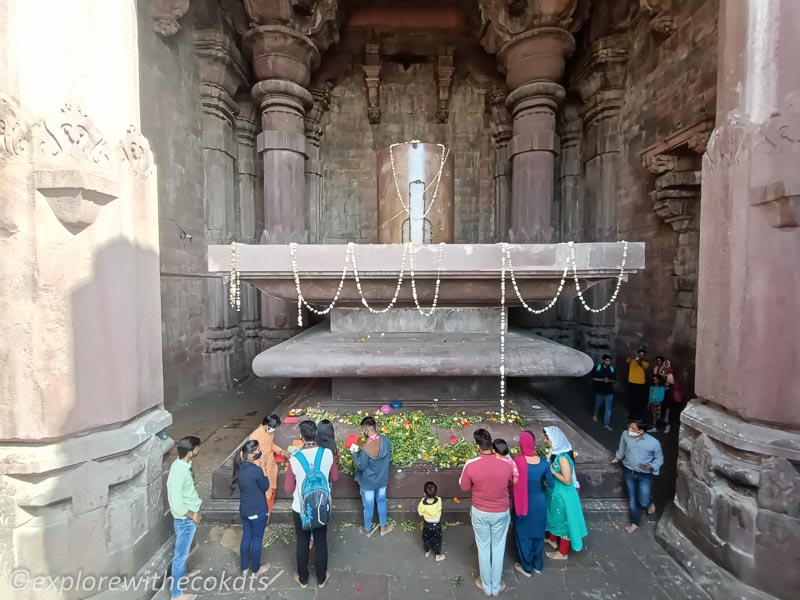
Best time to visit Bhojeshwar Temple, Bhopal
Weather-wise Bhojpur has a similar climate as Bhopal meaning summers are harsh and the stone surrounding makes the floor hot to walk on. Monsoon and Winter is the best time to visit this Shiva Temple.
The best time to visit is early morning or late evening when it is cooler and you can spend time around the temple. If you are clubbing the trip with Bhojeshwar temple and Bhimbetka Caves, then visit the temple early in the morning.
Resorts and Hotels in Bhojpur
Bhojpur being a village doesn’t have any hotels. The nearest city to Bhojpur being Bhopal has many accommodation options. The Hoshangabad highway is the nearest to Bhojpur and has many resorts on the road. Some of the options are
Heritage Places in Bhopal: Noor-us-Sabah Palace, Jahan Numa Palace
Resorts in Bhopal: Kanha Palm Springs, Cherry Stay Holiday Homes & Resort
Hotels in Bhopal: Sayaji Bhopal, Hotel Shree Vatika
Homestay: Jheelam Homestay, Peacock Hill Homestay
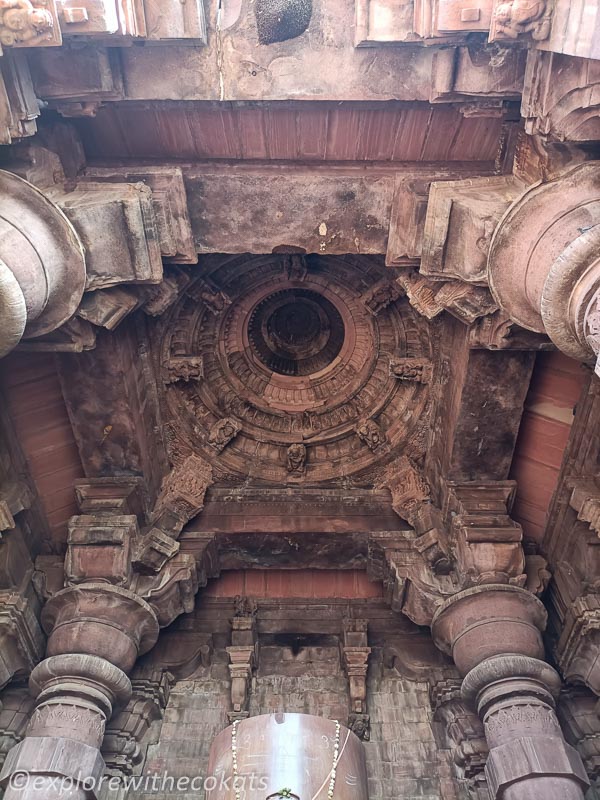
How to reach Bhojeshwar Shiva Temple?
By Air: Nearest Airport is Bhopal. From there you may take a public bus or hire a cab.
By Train: Nearest Train Station is Bhopal. From there you may take a public bus or hire a cab.
By Road: There are plenty of private and public buses. One may also take a cab for a round trip.
FAQs about Bhojeshwar Shiva Temple | Bhojpur Temple
Is Bhojeshwar Temple really a temple?
There are theories that indicate that this temple was more a memorial or funerary monument to Raja Bhoj’s father or uncles like the Chhatris or cenotaphs. There was also practice to build temples over the remains of a human being to hasten his journey to the heavens!
Why is Bhojeshwar Shiva Temple called the unfinished temple?
The Mandapa (pillared hall) that is generally present in all Hindu temples does not exist.
The Shikhara main body (tower) is also absent. In spite of this, people have continued to worship in the temple since the 11th century, due to the presence of Shiva Lingam.
Why was Bhojeshwar Shiva Temple left unfinished?
While there is no definite answer, according to legends these are some of the answers.
- Lack of financial resources
- Natural calamities such as earthquakes
- Towards the end of Bhoja reign there were impending wars.
- Raja Bhoj’s deteriorating health
- A calculation mistake that resulted in the roof collapsing that damaged the Shivalinga. As per Hindu Scriptures (Agamas) , one cannot worship in a temple whose idol is damaged. Hence Raja Bhoj might have stopped the work.
Is Bhojpur Shiva temple open right now?
With the ever-changing COVID-19 guidelines by the Madhya Pradesh state and the country, it is best to check before going. More details can be found on the MP Tourism official website.
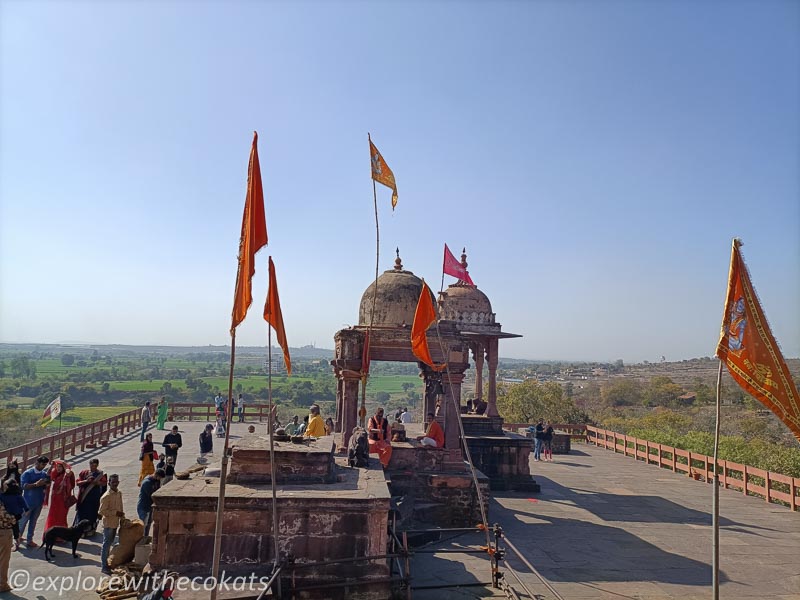
Do’s and Don’ts to plan a trip to Bhojpur
- Bhojpur town and its nearby areas are extremely hot during the day. I visited in mid-February afternoon but the sun was still too harsh. It is best to carry a cap/hat/stole and sunglasses.
- Wear clothes that are loose, comfortable and sweat absorbing.
- Wear a pair of comfortable footwear as you will climb steps and walk in the temple premises.
- Carry a bottle of water and some snacks for a quick hunger bite. Keep the snacks tucked in a bag so as not to be visible to the resident monkeys. They will snatch it away!
- Photography is allowed at Bhojeshwar Shiva Temple.
- It is ideal to club a trip to Bhojpur with Bhimbetka caves from Bhopal.
Sustainable tips to visit Bhojeshwar Shiva Temple
- Like every Hindu temple, devotees are not allowed to wear shoes. Socks are allowed.
- Respect the Hindu culture and do not wear clothes that show too much skin. Cover your shoulders and knees.
- Throw your garbage in the dustbins located at the entrance of each temple.
- Treat the temple premises with respect and do not use them for picnics.
Do Indian temples fascinate you? Read about
Other articles from Madhya Pradesh
Plan a trip to Mandu Madhya Pradesh
Places to visit in Pachmarhi Madhya Pradesh
A food walk through Chappan Dukan, Indore
Disclaimer: This article includes affiliate links. It means it adds no extra cost to you if you book through the link but I get a referral bonus which helps me earn a little to keep this website up and running.
Pin this post!
